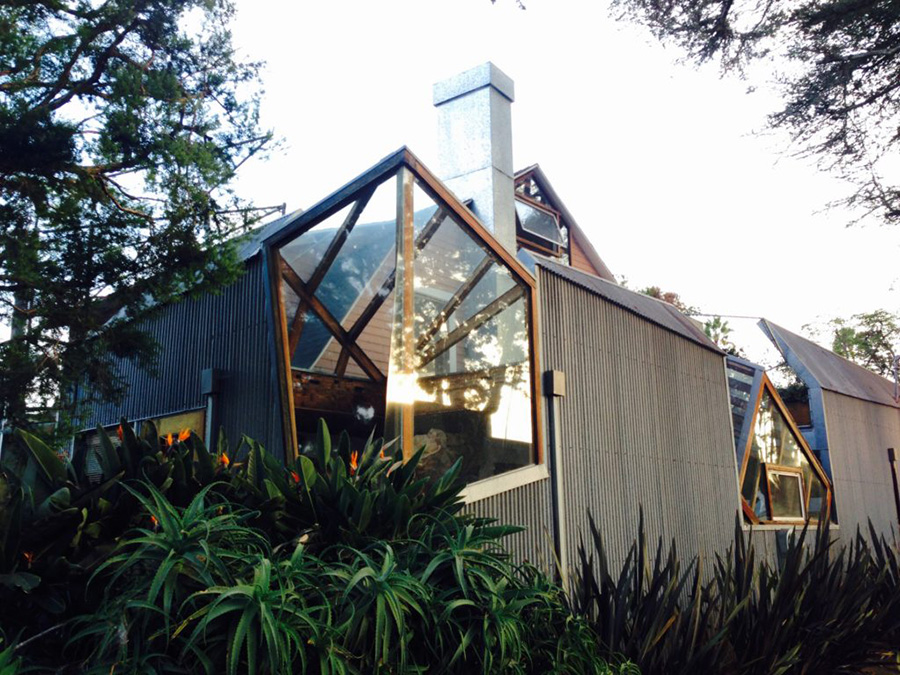122
Children's Museum of Houston
Author: Robert Venturi
Year: 1980 Edit Add
Book: Postmodernism, or, The Cultural Logic of Late Capitalism
Children's Museum of Houston
Author: Robert VenturiYear: 1980 Edit Add
Book: Postmodernism, or, The Cultural Logic of Late Capitalism
It is not clear, to put it crudely and succinctly, why, in an environment of sheer advertising simulacra and images, we should even want to sharpen and renew our perception of those things. Can some other function, then, be conceived for culture in our time? The question at least offers a standard by which to evaluate the claims of contemporary Postmodernism to some genuine formal and spatial originality: it can at least do so negatively by starkly disclosing the remnants of an unacceptable modernism still at work in the various postmodern manifestos: the concept of irony in Venturi, for example, just as fully as that of defamiliarization seen in the book by MacraeGibson.
It is not clear, to put it crudely and succinctly, why, in an environment of sheer advertising simulacra and images, we should even want to sharpen and renew our perception of those things. Can some other function, then, be conceived for culture in our time? The question at least offers a standard by which to evaluate the claims of contemporary Postmodernism to some genuine formal and spatial originality: it can at least do so negatively by starkly disclosing the remnants of an unacceptable modernism still at work in the various postmodern manifestos: the concept of irony in Venturi, for example, just as fully as that of defamiliarization seen in the book by MacraeGibson.
Gehry Residence
Author: Frank Gehry
Year: 1978 Edit Add
Book: Postmodernism, or, The Cultural Logic of Late Capitalism
Gehry Residence
Author: Frank GehryYear: 1978 Edit Add
Book: Postmodernism, or, The Cultural Logic of Late Capitalism
I will add that I must also refuse Macrae-Gibson's account on a more empirical basis, since, in my experience, the Gehry house does not particularly correspond to the defamiliarizing and perception-renewing description. Nonetheless I am interested in the description from a somewhat different angle, which is that of its continuing possibility in a postmodernist framework. The account is still plausible, although it should not be any longer, and I think we also need an explanation of why this should be so. Let us look again at the specifics, which suggest that the building has as its primary aesthetic function to subvert (or to block) "the formation of an intellectual picture that might destroy the continual immediacy of perceptual shock." A few sentences later, this "intellectual picture" (which must be resisted, subverted, or blocked) is assimilated to the "memory of a thing" (as distinguished from the positive value of the "perception of that thing"). We may here detect a slight modification of the older modernist paradigm in the reinforcement and increasing specification of the negative term (that which is to be fragmented, undermined, forestalled).
I will add that I must also refuse Macrae-Gibson's account on a more empirical basis, since, in my experience, the Gehry house does not particularly correspond to the defamiliarizing and perception-renewing description. Nonetheless I am interested in the description from a somewhat different angle, which is that of its continuing possibility in a postmodernist framework. The account is still plausible, although it should not be any longer, and I think we also need an explanation of why this should be so. Let us look again at the specifics, which suggest that the building has as its primary aesthetic function to subvert (or to block) "the formation of an intellectual picture that might destroy the continual immediacy of perceptual shock." A few sentences later, this "intellectual picture" (which must be resisted, subverted, or blocked) is assimilated to the "memory of a thing" (as distinguished from the positive value of the "perception of that thing"). We may here detect a slight modification of the older modernist paradigm in the reinforcement and increasing specification of the negative term (that which is to be fragmented, undermined, forestalled).
 Log-in
Log-in Source type: picture
Source type: picture Source type: picture
Source type: picture